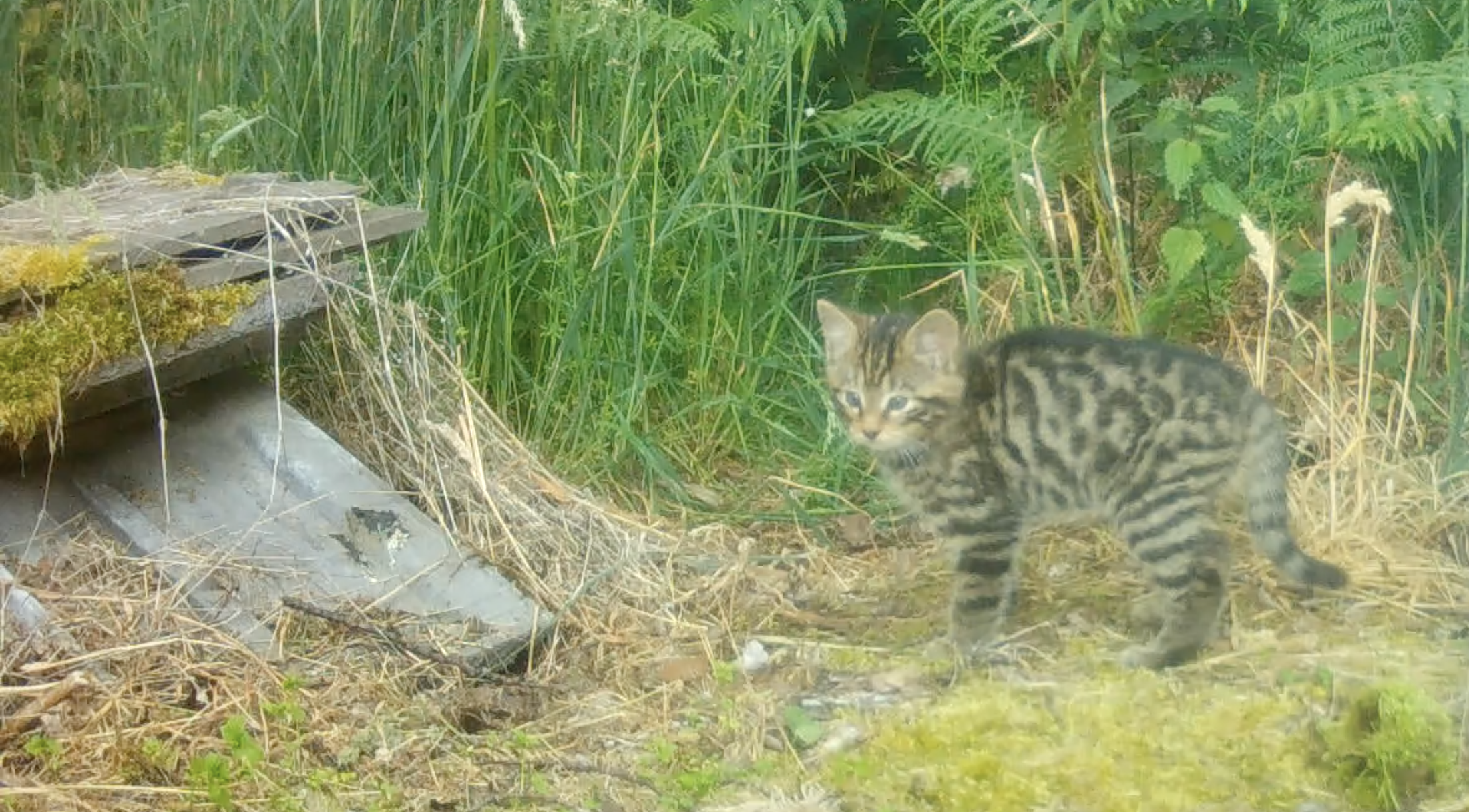Kittens born in the wild to released females for a second year
Following the successful releases of wildcats into the Cairngorms National Park in 2023 and 2024, several of the released female wildcats have given birth to kittens this summer.
Using camera trap footage, data from the GPS-collars that some of the females are fitted with, and information passed on by the public, the team are in the process of establishing how many females have given birth, and how many kittens have been born. So far, all the kittens appear to be healthy.
Following breeding success last year, this is a huge accomplishment for wildcat restoration efforts in Scotland, showing natural increase in the wild population.
The Saving Wildcats team are incredibly grateful to members of the public reporting sightings of the kittens. As a result, remote monitoring has been put in place. If you live in the Saving Wildcats project area (Badenoch and Strathspey) and have seen any wildcats or kittens (information on identifying a wildcat can be found here), then please get in touch via email at wildcats@rzss.org.uk.
Although wildcats are typically crepuscular, meaning they are active at dawn and dusk, while female wildcats are raising young, they are often more active during the day and can often be seen during daylight hours with their kittens, which is a natural behaviour.
Wildcats are protected by law, and we would ask that anyone who sees the kittens is mindful of not disturbing them. The first few months of a wildcats’ development are crucial as they learn from their mothers the skills necessary to survive. As the next generation of this critically endangered species, we hope that they are given every chance to thrive.

